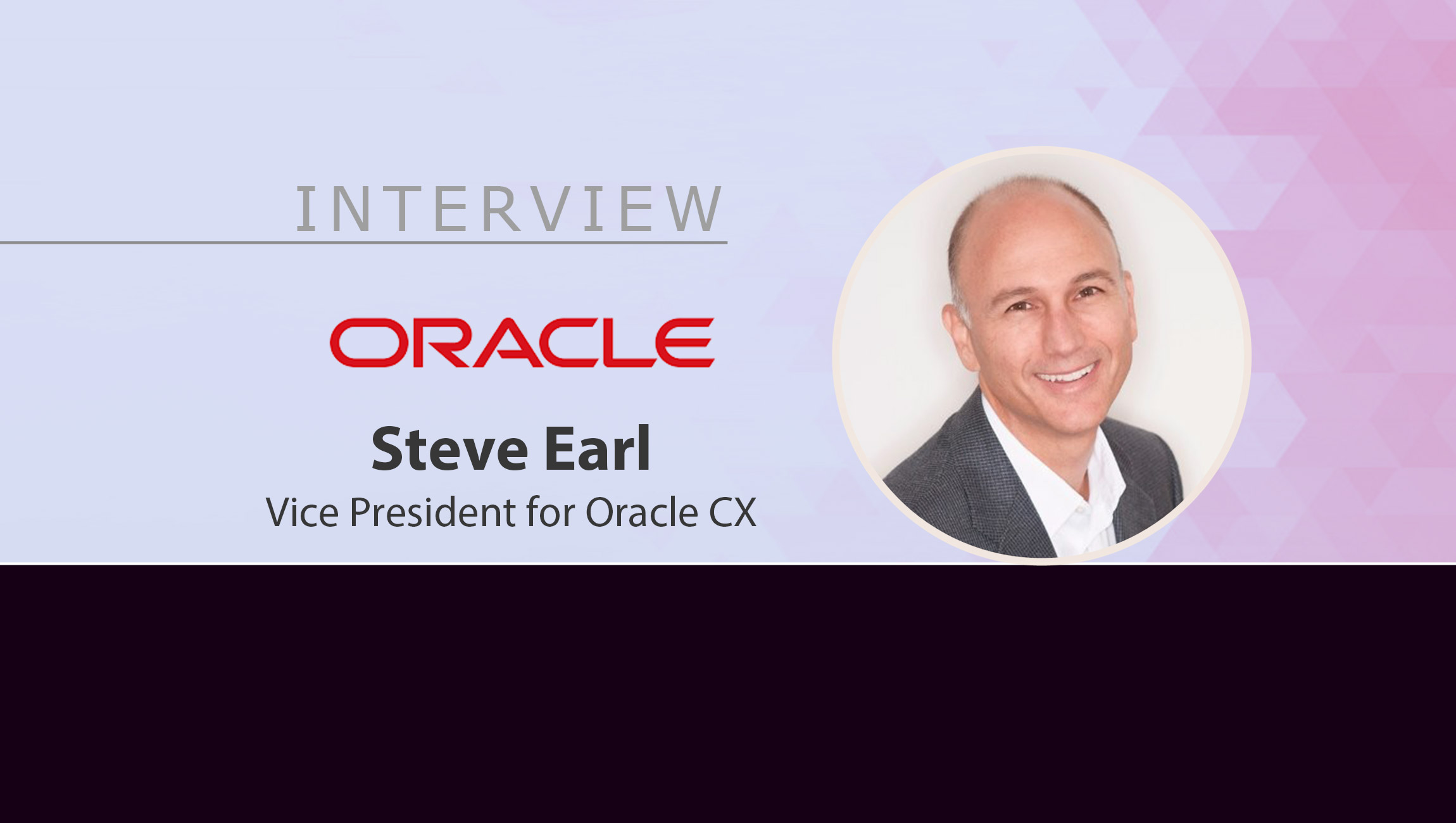What can help today’s marketers target more effectively and react with the most relevant messaging and campaigns based on evolving customer interests? Steve Earl, Vice President for Oracle CX shares a few tips while taking us through one of Oracle’s latest marketing offerings: Oracle Fusion Marketing, a solution that helps automate lead generation and lead qualification:
______
Welcome to this MarTech Series chat, Steve. We’d love to hear more about your marketing journey through the years and your role at Oracle?
Thanks for inviting me. I appreciate the opportunity to talk with you today!
I’ve been in the tech industry for over 30 years and have helped evolve the “cloud” business models from Application Service Providers (or ASP’s) in the 90s to today’s cloud-native SaaS applications, and from on-premise data warehouses to cloud-based customer data platforms. This has been quite the journey, where marketing has evolved from an IT-heavy conversation to being focused on the line of business leaders.
Today, I’m Vice President of Global Product Marketing for Oracle’s Advertising and Customer Experience (CX) business. We provide SaaS applications that span all front-office processes across advertising, marketing, sales and service. I’m responsible for developing and managing the go-to-market message across global sales and marketing programs.
For me, one of the largest challenges here at Oracle is doing product marketing at scale. When you conduct business in 175 countries, need to support thousands of sellers worldwide and have over 20 major Advertising and CX products to sell, there is a very real challenge of ensuring message relevancy and consistency. This is my job.
Marketing Technology News: MarTech Interview with Henk Campher, CMO at Thinkific
We’d love to hear about a few basic must-do strategies and best practices that you follow to ensure a consistent customer experience?
To help ensure a consistent customer experience, marketers should prioritize connecting all of their business applications – from front-office applications, like advertising, marketing, sales and service – to back-office applications, like supply chain, finance and HR. Connecting the front-office and back-office applications and data enables marketers to create a single view of the customer so that they can deliver a truly personalized, differentiated, and consistent customer experience across the board – no matter how, when, or where customers engage with you.
Most times, businesses struggle with ensuring their sales-marketing teams are aligned while trying to achieve the goal of building seamless messaging, nurtures and CX experiences: a few best practices and SalesTech / MarTech tools that come to mind that can help here?
The disconnect between sales and marketing teams is a growing challenge as the B2B buying process becomes more complex. Customers and prospects are interacting with organizations across an increasingly broad range of digital channels, buyer expectations are growing, and the need to access information at any time means much of the purchasing decision is now made before a salesperson is engaged. This means that marketers need to react more quickly, target prospects more effectively, and even launch ad campaigns seamlessly with as few points of friction as possible.
As marketing becomes more data and performance driven, it requires a different skill set and team structure to ensure the right data, the right MarTech and insights are being captured into centralized systems: what do you see today’s B2B marketers struggle with at this stage and what would you share as top tips?
The way in which B2B companies are making buying decisions has changed the way marketers and sellers work. This is particularly prevalent when dealing with CRM systems. The age-old promise of a CRM was that it would automate the selling process, help salespeople keep track of their prospects, remind them of where they are in their sales pursuits, and generally turn a physical Rolodex card into an interactive tool that is perpetually up-to-date, accessible, and in the end helps a salesperson sell more. But the reality of this has fallen short, and the dream of salesforce automation has turned into the nightmare of what some have called “salesforce administration.”
There are several gaps that keep CRMs from helping marketers and sellers work together to get more sales:
Marketing has too many disconnected systems: Marketers struggle because audiences are digital and online. Buyers only spend 17% of their time with a salesperson, which means the role of the marketer becomes that much more important to effectively educate the buyer. The digital shift means that buyers are doing more research on their own, across more channels and marketers need tools to effectively meet buyers where they are, no matter the channel.
Sales receives too many unqualified leads: Sellers struggle with the amount of unqualified leads they receive. Often times we have junior team members making decisions about the ranking of leads based on incomplete information and gut instincts.
Salesforce automation has become too focused on administration: I mentioned earlier how sellers spend too time on administrative tasks in CRM, updating lists, entering activities, and resolving data conflicts. Salesforce automation has become a tool for sales managers not sellers.
To help marketers and sellers address these challenges and get back to what they do best: building relationships and closing deals, they need a better way to reduce the amount of time, overhead, and misalignment between marketing and sales content, and they need distributed, but coordinated, ownership of B2B sales campaigns. Marketers and sellers today require a system that does the heavy lifting to engineer and unify business across advertising, content and sales.
Marketing Technology News: MarTech Series Interview with Aditya Padhye, General Manager at Trestle by eyeo
Oracle recently announced a new product called Oracle Fusion Marketing, the first solution in the market to fully automate lead generation and qualification for B2B. We built Fusion Marketing to unify B2B marketing and sales into a single end-to-end business flow. It automates the process from audience segmentation all the way through to generating a conversation-ready opportunity in your CRM. Engineering these applications to work together eliminates silos, removes human errors and automates the mundane. This is the next generation of marketing and sales automation and is the first of many engineered experiences to come from Oracle Advertising and CX.
In your view, as MarTech evolves and marketing trends change, what should marketers be keeping in mind to drive goals and business outcomes?
Several changes have occurred in the last two years that are driving innovation and new areas of focus for marketers and sellers.
With a renewed focus on leveraging digital technologies, companies are embracing data transformation to learn more about their customers and prospects via the use of customer data platforms (CDPs), modern loyalty programs, integrated e-commerce, and real-time personalization. In addition, marketers are focusing on new ways to improve sales enablement, time to qualification of leads, and to leverage AI and machine learning to identify insights, recommended content, and next best offers for customers.
It’s the combination of these technologies, orchestrated across all channels, that both improves the experience for customers, and also simplifies and informs marketers and sellers. The outcomes can be incredible – higher deal sizes, faster revenue, and efficiency improvements across the board.
Some last thoughts and marketing / MarTech takeaways before we wrap up? (Optional)
The way B2B companies buy has changed. B2B buyers expect the same experiences they receive when buying a consumer product, they want to control how and when they engage with a vendor, and they expect those interactions to be through digital channels. This change in the B2B buying process has blurred the lines between marketing and sales. It not only requires salestech and martech tools to come together, but also has implications on the skills and competencies required in a marketer and salesperson.
B2B marketers must:
- Expand their focus to the complete customer lifecycle, not just acquisition of new customers, but renewal, retention and growth of existing ones.
- Be data-centric by placing customer data at the core of everything they do.
- Be ready to embrace AI to help them make better decisions.
While sales professionals must:
- Embrace digital technologies because that is where their buyers are.
- Have a marketing mindset to convey the right message to the right person at the right time.
- Understand buyer context and know when their customer is actually ready to talk to a salesperson.
A marketing quote or two to leave us with?
Imagine a world where MQLs no longer exist – where AI enables us to skip that stage and deliver qualified opportunities direct to sales – we are there.
Marketing and sales alignment can only occur when each are measured on the same success metric.
Marketing Technology News: MarTech Interview with Chris Leong, Chief Marketing Officer at Schneider Electric
 Oracle is a cloud technology company that provides organizations around the world with computing infrastructure and software to help them innovate, unlock efficiencies and become more effective.
Oracle is a cloud technology company that provides organizations around the world with computing infrastructure and software to help them innovate, unlock efficiencies and become more effective.
Steve Earl is the Vice President for Oracle CX
Catch the Latest Episodes of our SalesStar Podcast!
Episode 102: B2B Marketing And MarTech Learnings With Michelle Lisowski, Global Director, B2B Marketing At Uber
Episode 101: Evolving Trends In Sales And Salestech With Amy McClain, Senior Manager Of Sales Enablement, Calendly
Episode 100: Tools And Technologies That Help Drive Better Team Efforts: With Shawn Herring, VP Marketing At PandaDoc











